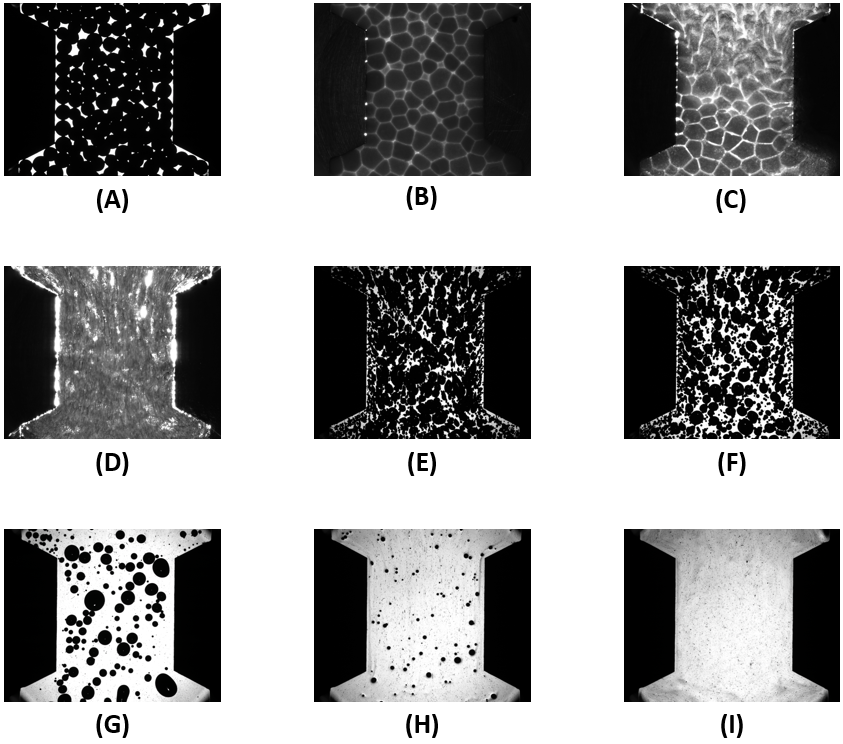The flow of polymeric foams through narrow contractile geometries
Dr Ching-Hsien Chen, Dr B Hallmark, Prof. J. F. Davidson
Project status: ongoing
The first tranche of experimental work at Cambridge is currently examining the flow of molten pentane-laden polystyrene through contracting and expanding flow channels. This is done at high temperature (about 160 °C) and at pressures varying between atmospheric pressure and 60 bar. Variation of the pressure effects both the bubble size and the bubble volume fraction, hence different foam and bubbly liquid compositions can be examinined relatively easily subject to the mitigation of bubble coalescence.
The experimental platform that is being used is the Cambridge Multi-Pass rheometer, an invention of emeritus Professor Malcolm Mackley. More background information on this very versatile machine can be found on Malcolm's website (http://www.malcolmmackley.com/apparatus/multipass-rheometer/) and if you're interested in buying one, please contact Strata Technology Limited (http://www.stratatec.co.uk/products/laboratory-solutions/multi-pass-rheometer).
The first challenge when working with molten polystyrene flow is to obtain the bubbly liquid from pre-pregnated polystyrene beads. The sequence of images below illustrates the transformation that takes place starting from (a) beads at 20 °C loaded into a contracting-expanding flow geometry, through (b), (c) and (d) where the beads swell as they reach 110 °C until they finally form a bubbly liquid at 160 °C (e). The bubble volume fraction can then be reduced by pressurising the sample from near atmospheric pressure (e) up to 60 bar gauge (i), whereupon a single liquid phase is obtained.

Exploratory work using bubble swarms in both polystyrene melts and in highly viscous Newtonian liquids revealed a rich variety of bubble dyamics and behaviour, dependent on the nature of the continuous phase, the bubble volume fraction and the defromation rate. A summary of the key findings of this work can be found in this paper, which was presented at the 33rd meeting of the Polymer Processing Society. Due to the complexity of the observed behaviour of the bubble swarms, research progressed by examining a simpler, quantifiable, system containing a single bubble in a variety of continuous phases flowing through constriction geometries.
